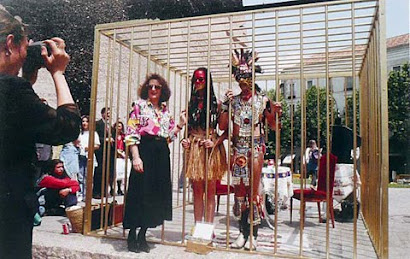

Neil Cummings and Marysia Lewandowska are London based artists who collaborated extensively from 1995 to 2008. Their work has relied on institutions, museums and galleries of course, but also banks, schools, stores, and archives. Some of the well-known locations have included the Tate Modern, Whitechapel Gallery in London, Tapies Foundation in Barcelona, and Kunstwerke in Berlin. An impressive aspect of their work is the variety of ways it has been executed and the threads of continuity that exist within it.
Themes of exchange mechanisms and value are often explored, especially in their intervention and activation styled, institutional work. These themes are explicitly seen in work titles such as Capital, Equal Exchange, and Gift. In the work Give and Take the value of museum collections are somewhat antagonistically approached through the medium of sound installation. The work features a ten-minute looping soundtrack featuring rattling dishes, which slowly rises in volume and culminates in a crash of clearly breaking objects. Installed amidst a massive ceramics collection this piece responds to the greatest fear of curatorial work: destruction of artifacts. Equal Exchange features, among other things, price tags on collection objects. This tactic is reversed in Gift in which museumgoers are randomly selected to receive prints created for the project.
Their video work runs a wide gamut of approaches as well. Screen Tests is constructed of carefully edited archives of old films with modern sound effects and music. Often the sounds and music blur together one evolving out of the other. Archives are also mined from Polish amateur film clubs to create the body of work, Enthusiasm. Very different from these is the work Museum Futures, which is a fictional work set in the future in which curators discuss an intense commoditization and centralization of art in the early Twenty First Century. This piece reminds me of the current atmosphere of wealth intensification and power centralization we experience with corporate personhood.


No comments:
Post a Comment